Results 21 to 30 of 41
Threaded View
-
12-08-2013, 11:42 PM #1At this point in time...




- Join Date
- Jun 2007
- Location
- North Idaho Redoubt
- Posts
- 27,069
- Blog Entries
- 1
Thanked: 13249 Edge Restoration - Heavy Bevel setting
Edge Restoration - Heavy Bevel setting
I was working a pretty chipped up razor the other day and a thread popped up about setting bevel on bad razors, it seemed that the razor gods were saying take some pics while you work Glen

So here is what I did ...
First off every time the term Breadknifing is used it brings up negative responses because people only relate it to the 90° version which is useful when done correctly, so I am going to start calling it "High Angle Honing"
which is useful when done correctly, so I am going to start calling it "High Angle Honing" 
High Angle honing can be used from 90° in increments down to the spine touching the hone, or "Normal Angle honing"
My typical progression is the lowest angle I can use to re-set the edge to the correct geometry that also means taking the spine into account, those of you that flatten out an edge on a swayback spine are creating more issues then you are solving, so pay attention to keeping it all in line.. Myself, if at all possible I will lean toward a slight smile
So let's look at some pics and I will explain each step, keeping in mind that you can start your progression at any of these angles
These pics are at 90° and here is why I decided on that angle, looking closely at that Triple+ chip there was a chance of that chip turning into a crack and running upward toward the spine if I had started lower and applied any pressure from the side.. This was the safest route to take by taking out most all of the chip at 90° then shifting lower slowly..
All this work is done on a DMT 325 plate
You will want to use the scratch in the steel just above and to the right as a reference spot as this progresses, I used that and if I had been a bit smarter when I started I would have colored the side before I started with a Magic Marker
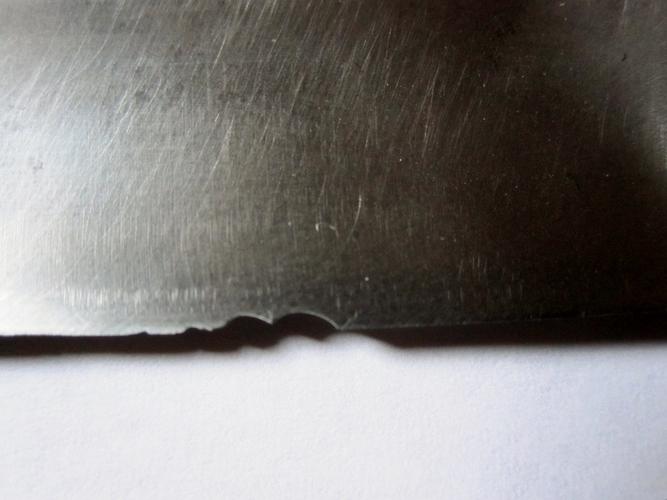
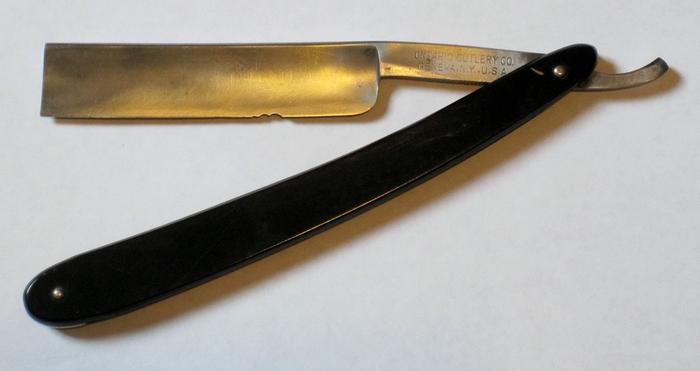
You can see as the chips slowly get smaller and smaller
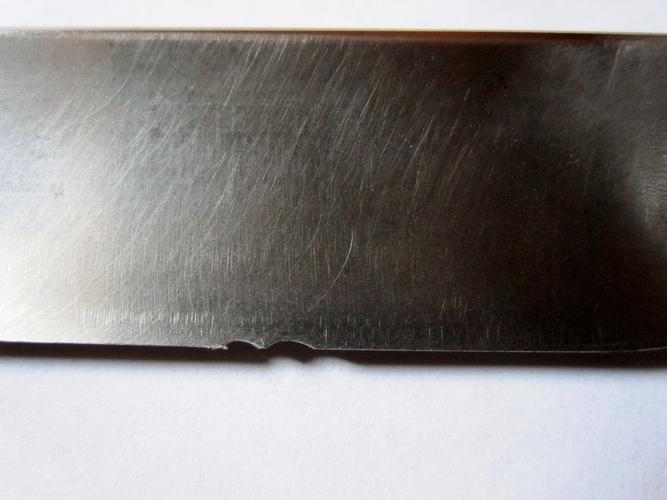
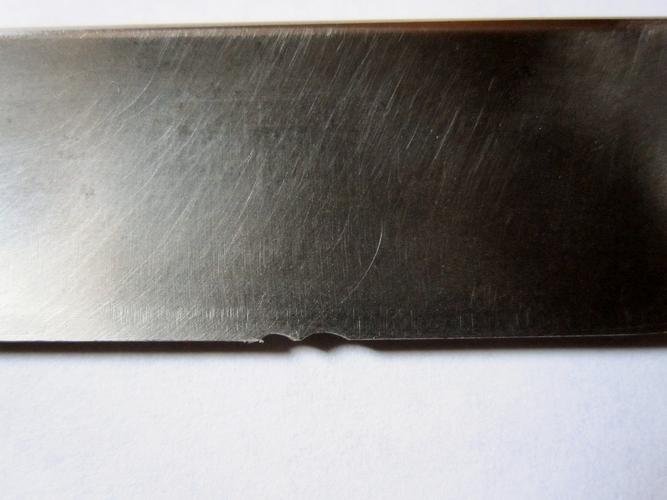
Here the chips are nearly gone
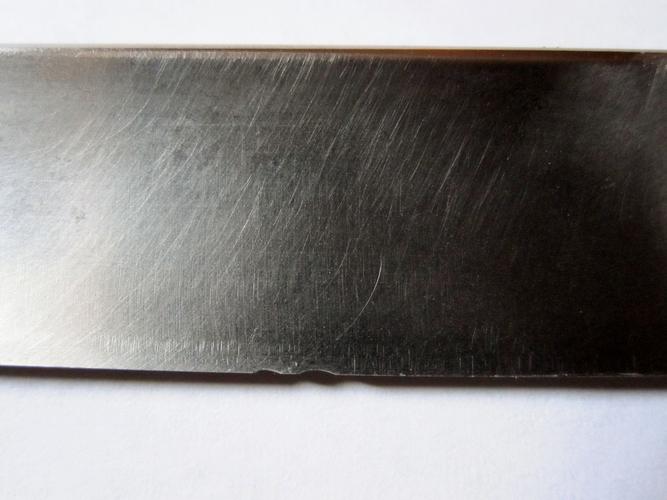
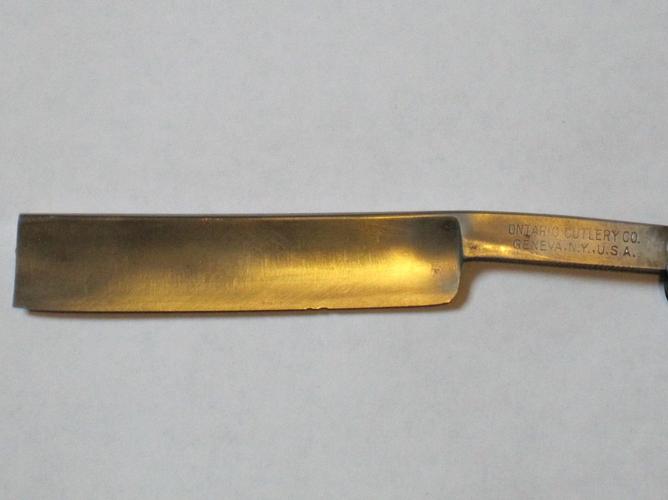
Finally done at the 90° angle if you look very closely you can just barely make out two tiny dimples in the edge, this is where you want to stop and shift into bevel cutting so that you don't waste any steel...
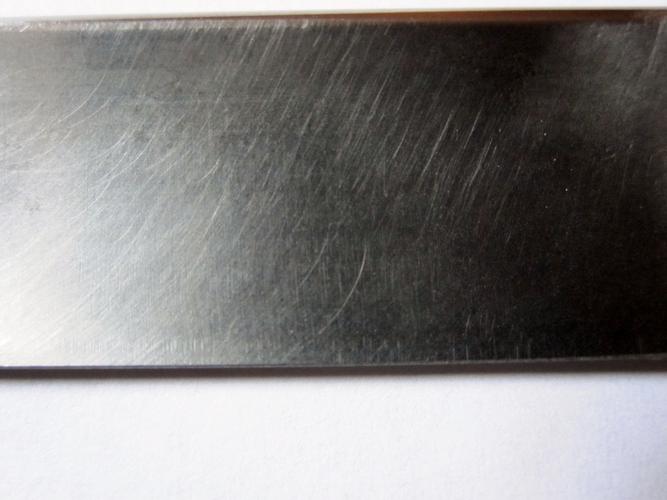
Time involved on the hone = about 1 minute, just make sure you keep checking the edge and the contour of the edge, on this razor I kept working the heel back so that when I started honing I would not have any issues back there.. I used very light pressure and just let the DMT do its job..
More coming
-
The Following 29 Users Say Thank You to gssixgun For This Useful Post:
10Pups (12-13-2013), BearCWY (10-17-2018), Cangooner (12-14-2013), Chevhead (12-13-2014), DduckyMark (10-04-2015), dta116 (08-08-2016), Fikira (05-03-2014), Geezer (05-27-2015), Grayelk (12-08-2015), greyrider1865 (01-04-2014), Haroldg48 (06-16-2015), Havachat45 (12-15-2013), JBHoren (12-09-2013), jmercer (01-21-2015), nipper (01-24-2016), OnTheRocks (02-10-2014), pcm (03-12-2015), Phrank (05-27-2015), Pi3 (11-20-2014), Sharp&Shiny (06-16-2015), SirStropalot (12-09-2013), Slawman (12-30-2016), Steve56 (12-01-2019), Stubear (06-16-2015), tinkersd (10-28-2016), Whizbang (08-17-2017), Willisf (06-16-2015), WW243 (12-08-2013), xiaotuzi (10-11-2016)


 73Likes
73Likes LinkBack URL
LinkBack URL About LinkBacks
About LinkBacks






 Reply With Quote
Reply With Quote
